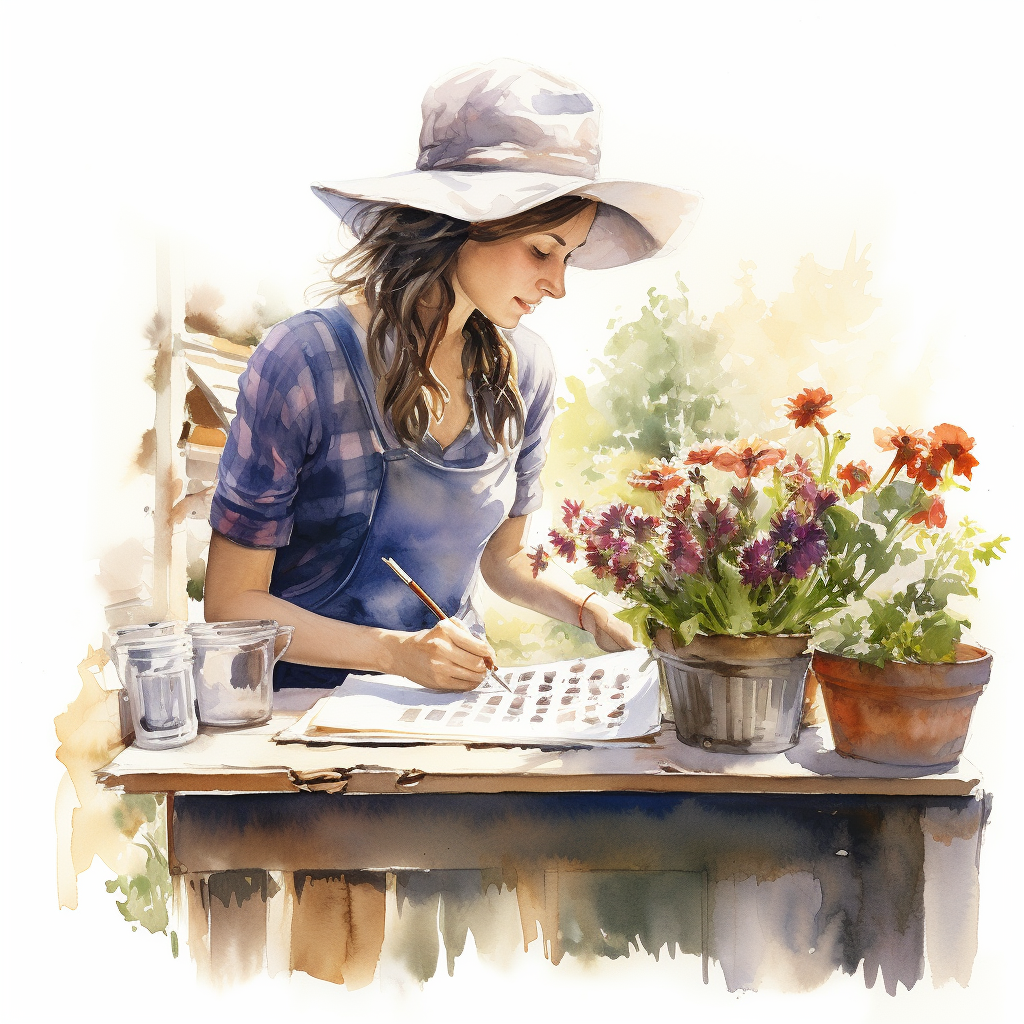Ah, gardening. It’s kind of like golf. When it’s going well, it can be meditative. But when your garden goes off the deep end, it can be extremely annoying and make you want to hang up your garden clogs for good (or at least for the week, maybe).
If you’ve been gardening for even just a month, you quickly realize that gardening requires a certain level of planning and organization to ensure that your plants thrive and your harvest is bountiful.
One of the most important tools in your gardening arsenal is a garden calendar. A garden calendar is a valuable tool that can help you maximize your garden’s potential and make the most of your time and resources. In this article, we will explore the benefits of a garden calendar, how to create one, and how to use it effectively.
The Benefits of Garden Calendar
A garden calendar is an essential tool for any gardener, whether you are a seasoned pro or a beginner. The benefits of using a garden calendar include:
1. Planning ahead – With a garden calendar, you can plan your garden season in advance, ensuring that you have everything you need when it’s time to plant.
2. Maximizing your garden’s potential – A garden calendar can help you schedule planting, watering, fertilizing, and harvesting, ensuring that your garden is always at its best.
3. Saving time and resources – By using a garden calendar, you can avoid overplanting or underplanting, which can save you time and resources in the long run.
4. Tracking progress – A garden calendar allows you to track the progress of your plants and make adjustments as needed.
The Role of a Garden Calendar
A garden calendar is an indispensable tool that can help you plan, organize, and execute your garden season. The primary role of a garden calendar is to keep track of the various tasks that need to be done throughout the growing season. It can help you determine when to plant, when to water, when to fertilize, and when to harvest. With a garden calendar, you can stay on top of your gardening tasks and ensure that your plants are healthy and productive.
Creating Your Garden Calendar
Creating a garden calendar is easy and can be done in just a few simple steps. Here’s how to get started:
Understanding Your Frost Dates
The first step in creating your garden calendar is to determine your frost dates. Frost dates are the average dates of the first and last frost in your area. Knowing your frost dates is crucial for planning your planting schedule, as it will help you determine when to start your seeds and when to plant your seedlings.
Planning Your Planting Schedule
Once you know your frost dates, you can start planning your planting schedule. This involves deciding which crops you want to grow and when to plant them. You can use your garden calendar to schedule planting dates for each crop, taking into account the length of the growing season and the time required for each crop to mature.
Choosing Your Garden Calendar Format
There are many different formats for garden calendars, from simple paper calendars to sophisticated digital tools. The most important thing is to choose a format that works for you and that you will use consistently. Some popular garden calendar formats include paper calendars, digital calendars, and garden planning apps.
Tips for Using Your Garden Calendar
Using a garden calendar effectively requires discipline and organization. Here are some tips to help you stay on track:
Staying on Schedule
The key to using a garden calendar effectively is to stick to your schedule. Make sure to check your calendar regularly and complete the tasks on time. If you fall behind, don’t panic. Simply adjust your schedule and get back on track as soon as possible.
Making Adjustments as Needed
Wait, but didn’t you just say stay on schedule? Yes, but…gardening is a dynamic process, and sometimes unexpected things happen. If you encounter unexpected weather or pest problems, be prepared to make adjustments to your schedule. Use your garden calendar as a guide, but be flexible and willing to adapt.
Incorporating Garden Tasks into Your Calendar
Your garden calendar should include not only planting and harvesting schedules, but also other important tasks, such as watering, fertilizing, and pest control. Incorporating these tasks into your calendar can help you stay on track and ensure that your garden is healthy and productive.
Conclusion
In conclusion, using a garden calendar can help you maximize your garden’s potential and make the most of your time and resources. By following the tips outlined in this article, you can stay on schedule and have the season you hoped you would’ve had last year. With a little planning and organization, you can enjoy a bountiful and healthy garden season. And if you need help getting started, be sure to check out Rooted Reminders, which is free and easy to use.

